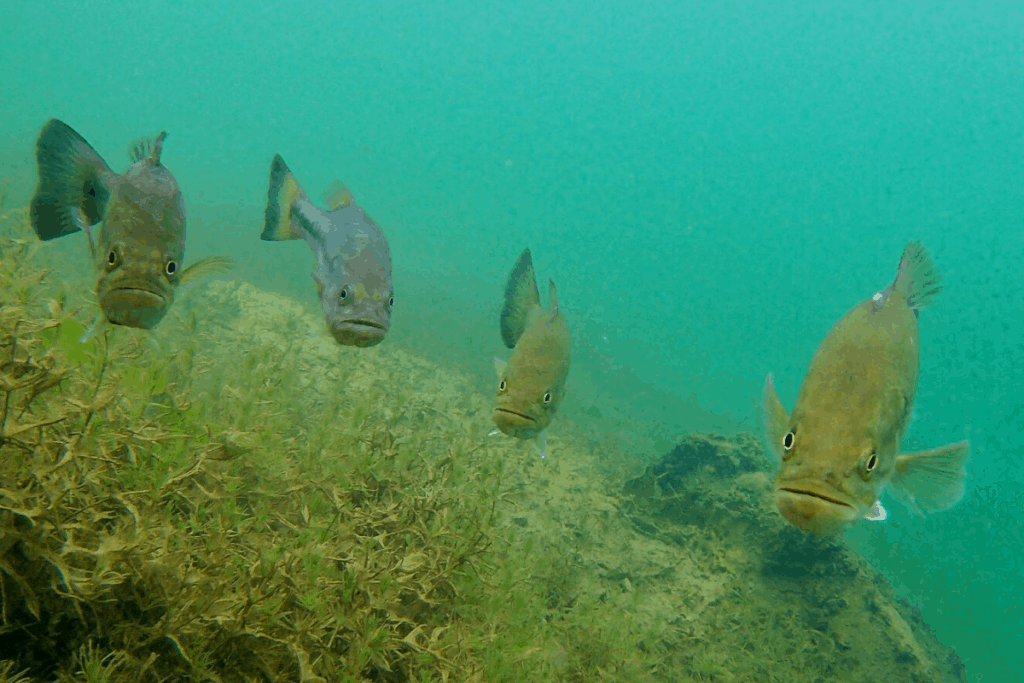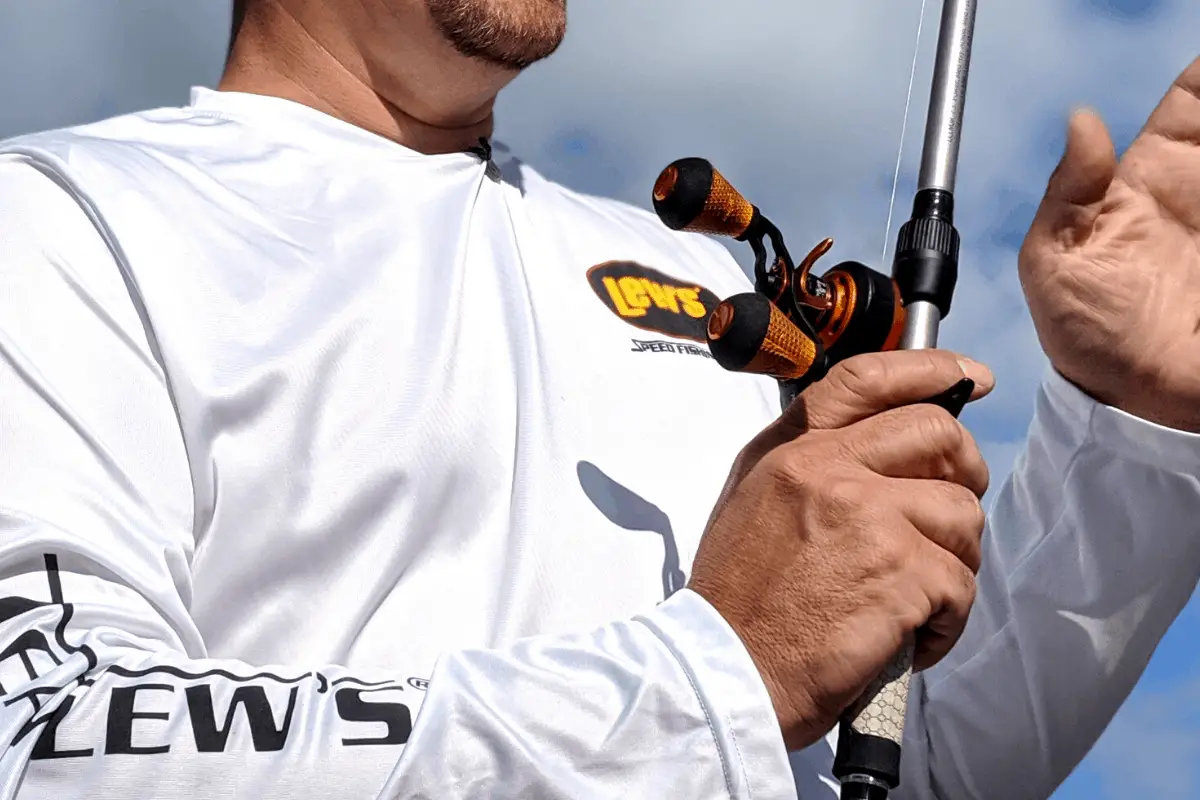It doesn’t matter whether you are brand new to the sport, or a seasoned pro casting-for-cash, we make mistakes. Avoiding these common pitfalls can change a frustrating day on the water to one we remember for years.
Bass anglers tend to repeat the same common mistakes:
- Moving Our Lures Too Much
- Fishing Past History
- Not Paying Attention to What The Bass are Telling Us
- Catching One Fish and Moving On
- Not Fishing Old Lures – Because They are Old
- Not Focusing on what the Prey is Doing
These common mistakes seem simple to identify and correct, but we tend to overthink things and often make bass fishing more difficult than it needs to be. Some days can be challenging, we don’t need to complicate it by getting in our own way of success.
Mistake #1: Moving Our Lures Too Much
Yes, there are times when burning a bait is the key to triggering bites. Day-in-and-day-out, we tend to impart too much action on our lures and the result is an unnatural presentation.
Bass have small brains and rely on instincts.
If something does not look natural in the water our favorite gamefish will likely avoid the meal.
I have learned when filming bass underwater, that it is surprising how often fish come to take a close look at a lure. They appear from nowhere, often in a hurry, take a close look at the bait and then swim off.
This curiosity is something that we should take advantage of as anglers.
Moving our lures very slowly and doing our best to imagine what prey looks like under the water is the key to this.
Think about watching crawfish, minnows, shad, and sunfish in the water. Most of the time these forage species are barely active.
Predators Want an Easy Meal
When a pack of wolves roam the valleys of Yellowstone National Park, they are looking for an easy meal. If there is a sick or wounded Elk in a herd, this is the animal that these keen predators will target first.
Why?
It is a high-percentage hunt that results in the wolves expending less energy.
Bass are the exact same way.
We can use this to our advantage as bass anglers.
Imparting the right amount of action on our baits that mimic wounded and sick prey is a sure-fire way to grab the attention of a bass. Big lunkers get that way because they ingest more calories than they burn. Chasing healthy shad around all day without ever catching one is a recipe for starvation.
Bass often Attack to Wound and Then Eat
I witnessed this first hand when fishing a B.A.S.S. Open event on Oneida Lake in New York.
My co-angler and I were using walking topwaters, like a Zara Spook, and the smallmouth were slashing, darting, and swatting at these lures like crazy.
Yet, they were not hooking up.
If we took a follow-up lure, like a white wacky rigged stickbait, and tossed it where they were slashing at the hard baits, those smallies would eat it up as the lure slowly shimmied to the bottom.
It appeared to the smallmouth as a wounded shad that was now easy picking.
Predators do this all the time in the ocean.
Make sure our lures look wounded and struggling and it activates that feeding instinct in all bass – even the big ones.
Mistake #2: Fishing Past History
The longer we have fished the more we fall into this trap.
I do this all the time.
There are certain lures and places on my home lake that I fall back on – to a fault.
It is not a surprise that some of my best fishing trips are to new bodies of water. Why? It forces me to look at a place with fresh and open eyes. I revert back to best practices and I have no history on that water to fall back on.
This past history comes in many forms.
This Lure Worked Before – It Should Work Now
This is probably my biggest downfall – as well as many other anglers.
There is only one problem. The variables involved in fishing change so fast. Not only do things get altered from day-to-day, but often from hour-to-hour.
The sun is out. Now it’s cloudy. The wind is blowing. Now it’s not. There is heavy boat traffic. The water level is down. The dam operators shut off the power generation. The water temp changed.
The list is endless.
Our first question that we should always ask ourselves is this:
“What are the bass feeding on now?”
This is not always easy to answer, but it starts with looking for life. Are there some shore birds nearby? That means there is bait shallow, therefore their will be bass shallow.
Can you find schools of bluegills? Do you see turtles? Are there gulls circling overhead?
All of these can give anglers clues to what the prey species are doing. Lure selection should be based on these initial clues, not what past history wants us to do.

Mistake #3: Not Paying Attention to What the Bass are Telling Us
Sounds weird – I know.
Let me give you an example.
Let’s say that you just finished a presentation flipping a jig into a bush. You came up empty are are reeling the jig back to the boat. You notice a nice bass dart out of the depths and take a look at the lure before turning when it sees the boat.
What does this tell us?
First, it may be worth a shot presenting the bass a moving lure. Choose something that has a horizontally oriented retrieve to it.
Second, the better fish may be hanging deeper than we first thought. There could be a dropoff, a different type of bottom composition, or that bass is hanging where the light penetration falls off.
All of these are factors worth considering.
Here is another example.
How many times have anglers had their lure resting on the bottom, motionless, because they are in the midst of pulling out a backlash. The anglers then reel up the excess line only to find a nice bass had engulfed the lure while it was sitting for a long time without moving.
Most of us have had this scenario play out more than once, but often we go right back to fishing the lure with more movement than what that fish we just caught clearly preferred – no movement.
The bass tell us these kind of clues all the time. It is our job to pay attention and be willing to adapt instead of resort back to what we know.
Mistake #4: Catching One Fish and Moving On
Once again, spending hours filming bass underwater has really made this mistake abundantly clear.
Bass are often found with other bass.
At certain times of the year, these schools of bass can be huge. During other times there may be only three or four fish together.
The point is the same – rarely are bass truly alone.
Think about this. How many times when we have the trolling motor on do we catch a bass, unhook it, put it back, and then keep moving right down the shoreline?
This may be the most common mistake anglers make. I have done it. We all have done it.
When a bass is caught there is something about the area that is attractive to that fish. Odds are, it has caught the attention of others as well. I have doubled, tripled, and even some days quadrupled, the number of fish I catch by working an area over thoroughly once a fish is caught. Just yesterday I caught three bass in three consecutive casts because I refused to move down the shoreline after I caught the first fish.
This may just be the easiest mistake that anglers can correct and it will pay off in many, many, more fish caught. I promise.
Mistake #5: Not Fishing Old Lures – Because They Are Old
The bass fishing industry is based on new products.
These shiny, enticing, new offerings are the lifeblood of the business and keep the industry afloat. As anglers, we love to learn about new products, new techniques, and new ways that we can up-the-odds of catching our favorite gamefish.
Here is a perfect example.
Remember when the Whopper Plopper came out? It was a revolutionary design that not only looked and sounded unique, but it literally works. And works well.
It didn’t take long and throngs of bass anglers were thrashing the lake’s surface with these new topwaters. It seemed that everyone was throwing a Whopper Plopper.
I know that the fish on my home lake heard and saw them daily for quite some time.
The lowly buzzbait was a casualty of this new upstart. I cannot even tell you the last time I saw another angler throwing a buzzbait. Not because the lure didn’t still catch fish, but only because it had fallen out of favor for a new lure.
Savvy bass anglers can use this to their advantage. Pulling out an older lure that lacks the popularity of a new lure can be the ticket to a great day on the water.
When bass have heard the plop, plop, of Whopper Ploppers ad nauseum, a topwater that offers a little different sound signature can be what those big bass prefer.
Yes, someday that Whopper Plopper will be the old lure. That will be the time to pull it back out of the tackle box.
Mistake #6: Not Focusing on What the Prey is Doing
This common mistake almost falls in to the same category of fishing past history.
Forage moves. When it does, the bass move with it.
If you are out on the water, fishing shallow, and not getting any bites at all – check for prey species. If there are zero bluegills, minnows, or shad in the shallows then there is a real good chance there will be zero bass.
The wolf and elk analogy comes back in play here. When the elk are up the sides up the mountains at a higher elevation that is where the wolf packs will be. When the elk move into the valleys guess who is not far behind.
Zeroing in on what your electronics are showing can help to speed up this process. If your lake has shad in it, where are the balls of shad showing up?
Are they in ten foot of water or thirty?
The bass will be somewhere near that depth.
Crawfish will breed in the spring and the fall. After the brief breeding season, they molt. It is during this time that crawfish will sport the reds and oranges that make them stand out in the water.
Keep an eye on the crawfish in your home waters. Matching their color patterns can make a huge difference in how many fish you catch. One lake that I often fish in Minnesota has a very silty bottom. The crawdads in this water almost look white. You can see them from quite a distance and so can the bass.
I don’t have any crawfish soft plastics that are white, but I do have plenty of soft jerkbaits that are.
Dragging one of these can dupe even the wariest smallmouth into thinking they found an easy meal.
Final Thoughts
As anglers, we often overthink things and refuse to let ourselves pay attention to the obvious.
Doing our best to avoid these common mistakes can directly correlate to getting more bites and putting more bass in the boat.
Tight lines. Be safe and make sure to encourage someone today. You never know how you may change their life forever.
Isaiah 6:8

